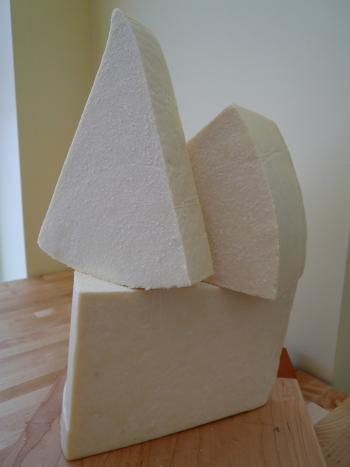Cotija
- Country
- Mexico
- Region
- Michoacán and Jalisco
- Size
- 16-18 ins diameter, 14 ins high
- Weight
- 37 lbs
- Website
- Milk
- Cow
- Classification
- Firm
- Rennet
- Animal
- Rind
- Natural

Formally referred to as El Queso Cotija de Montaña or "Cotija," as it's better known, is one of the oldest cheeses to come from Mexico.
Cheesemaking began with the arrival of the gold-seeking Spaniards in Mexico in the 1500s. Eventually they struck gold in a very remote, mountainous region of central Mexico, along the border of what is now Michoacán and Jalisco. Due to the remote geography and because mountains are not the easiest place to grow crops, the Spaniards depended heavily on their cows, and cheese made up a large part of both their diet and income.
Although Cotija is now made industrially all over Mexico, there is a great difference between the industrial cheese and that which comes from the mountains, where it is still made on a small scale by about 90 cheesemakers, who work seasonally with raw milk from cows grazing on mountain grass. The season runs from July to October (rainy season), when humidity is high enough to mature the cheese without cracking.
When the rain stops and the temperature rises, the wheels are transferred to cool, aging cellars. where the 37lb. wheels of Queso Cotija de Montaña (mountain Cotija) receive at least seven months of aging.
Since Cotija was largely devised to be preserved and aged in an era that pre-dated refrigeration, it is a very highly salted cheese.
The texture is dense, close and crumbly. The rind is quite thin and the paste of the cheese pale ivory in color.
Cotija can have a pronounced sour-milk aroma and an assertive bite overlaid with salt. However, good cheeses are balanced with a lactic tang that is pleasant in the mouth.



